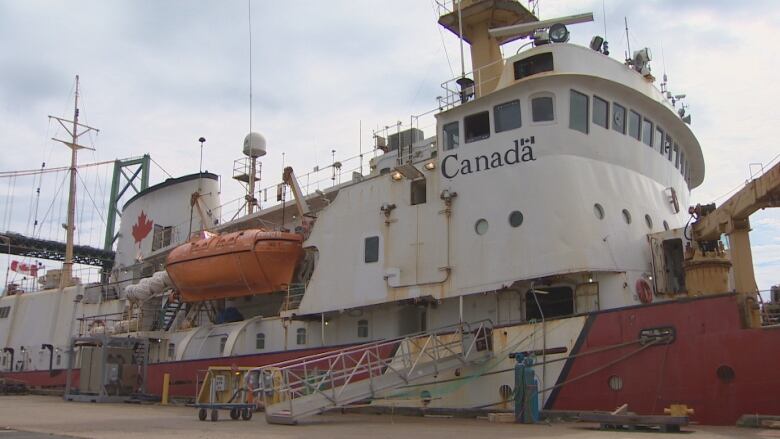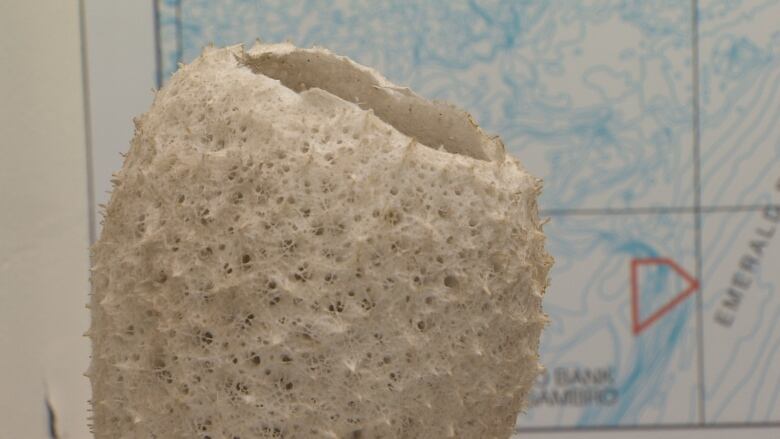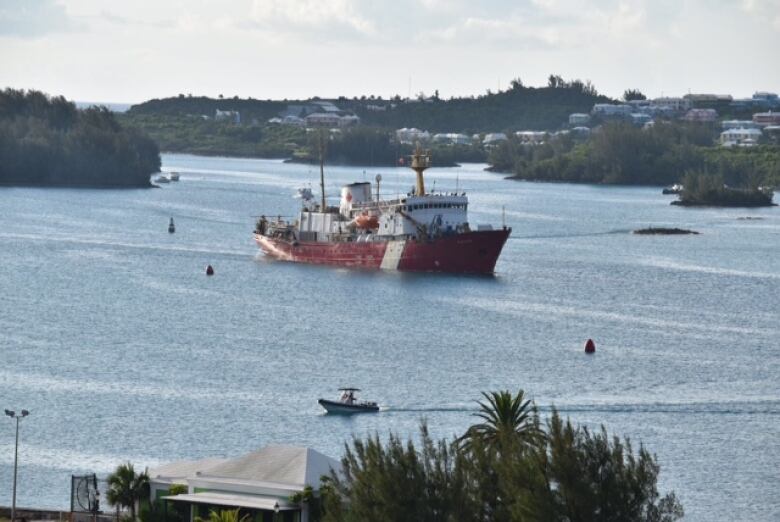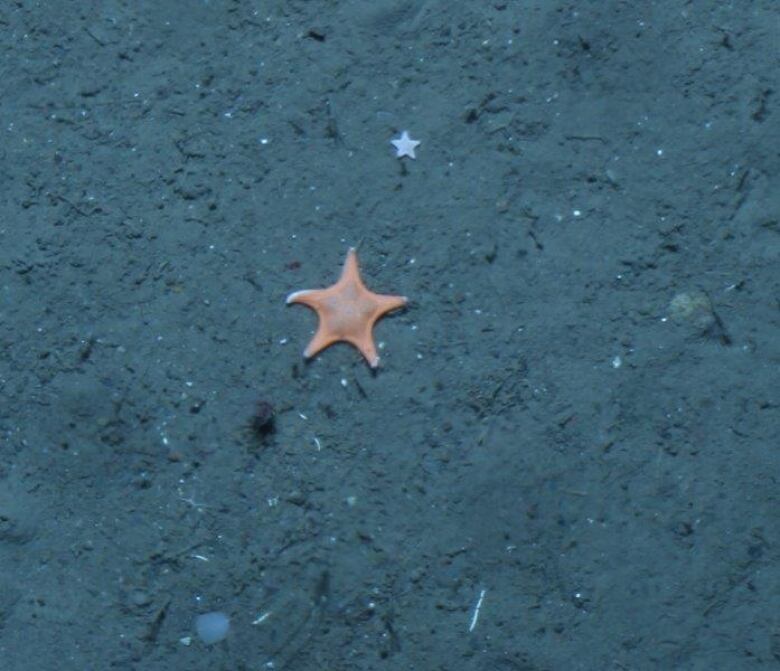Scientists gather in Dartmouth to study deep-sea sponges
'Every time we put the camera down, we're making new discoveries,' says DFO scientist

European scientists are at the Bedford Institute of Oceanography in Dartmouth, N.S., this week studying deep-sea sponges recovered off the coast of Nova Scotia by the Canadian research ship Hudson.
The veteran Coast Guard vessel is just back from an ambitious month-long, deep-water ocean survey that ran from Bermuda to the underwater canyons near Sable Island.
"We believe sponges are very important to the ocean ecosystem,"Jasper de Goeijof the University of Amsterdam said.
EU putting in $14M for sponge study
Doctorate studentMartin Bart anddeGoeijare at the Canadian government facility testing to see ifdeep-sea sponges behave like their shallow-water cousins andtake in bacteria and release food used by the tiny organisms at the bottom of the ocean food chain.
"We are hoping to get a lot more information on where are these sponge grounds. How do they work and how can we protect them in the future?" said de Goeij.

Theresearch is part of a four-year, $14-million study of deep-sea sponges in the North Atlantic funded by the European Union.
Eighteen institutions, including two in Canadathe Bedford Institute of Oceanographyand the Halifax-basedEcology Action Centre are taking part.
New discoveries
The survey involved more than deep-sea sponge research.The crew carried out nearly 400 deployments of ocean sensors and remote-operated vehicles with onboard cameras.
"Every time, we put the camera down we're making new discoveries," said the survey's chief scientist, Ellen Kenchington, of the Department of Fisheries and Oceans.
She says one of the highlights was the discovery of a massive unknown grave of subfossil coral at a depth of 1,700 metres on the Bowditch seamount off Bermuda.

"It was completely unexpected, that find. The area hadn't been surveyed," Kenchington said.
Samples taken from the site will be studied at laboratories to find out what caused the massive die-off.
"We can learn from it for the future because if it was an ocean-warming event or some other event such as that, it may be something we can use to predict it in other areas,"Kenchingtonsaid.
Squid search
Canadian scientists were unsuccessful in one survey missionfully documenting a rare squid species that is believed to be a prime food source for the endangered northernbottlenose whale found in the 65-kilometre long, underwater canyon near Sable Island known as the Gully.

"We didn't see enough squid to feed a whale and we didn't see the whales either,"Kenchignton said.
"We didn't see pregnant squid, we did see some squid as we went down.We just have to go back."
Logan Canyon
For the first time, a remote-operated vehicleexplored Logan Canyon, another deep ravine in the Sable Island area.
Scientists also sampled where the warm waters of the Gulf Stream meet cold water from the north.
At the latitude of Martha's Vineyard, they encountered a warm-water eddy from the Gulf Stream that reached 26 C.
That's wherethey found tropical species like the Portuguese man o'war.

The trip also gave scientists the chance to do a real-world check of ocean-modelling assumptions made by their computers.
Modelling predicted that in an area off Halifax, they would find sea pens, a species of soft coral that gets its name because is resemblesan old-fashioned quill pen.
"It was an area we had never been to with our cameras, and we put that camera down there and there were the sea pens, so validation of models is an important aspect of the work."
Nova Scotia is on the sponge map
One reason for the international interest in deep-water sponges off Nova Scotia lies in the Emerald Basin, about 65 kilometres from Sambro.
There, dense fields of deep-water sponges are found at the relatively shallow depth of 200 metres, just a five-hour steam from Halifax.

That means they can be more easily retrieved without damage and studied alive back at the Bedford Institute of Oceanography, which is what Spanish and Dutch scientists were doing this week as part of the EU-funded study.
The Dutch team with Canadian researchers are looking at how sponges process water, takein bacteria, viruses and dissolved organic carbon and excreteparticulates that feed other organisms.
More research planned
"They are able to clear the water column above them in a relatively short period of time, so we are working to quantify that with these sponges here," says Bedford Institute of Oceanographyresearcher Gabrielle Tomkins MacDonald.
Kenchington says more information is needed because many sponge grounds occur in trawling areas where the fishing can cause damage. The Emerald Basin pollack fishery was closed in 2013 to protect them.
"When we don't know about their functioning, we don't know what the impacts are, so we can't make good assessments ... about how to protect them [and] how to protect the fisheries for the future," she said.













_(720p).jpg)


 OFFICIAL HD MUSIC VIDEO.jpg)
.jpg)



























































































